Gina Holt and her business, “Wild About Birds,” has been a partner at the Marine Discovery Center and in its educational programs since 2005.
The Florida native may be seen educating the center’s youngest campers, as well as adults in the Florida Master Naturalist Program’s classes on the virtues and challenges of raptors. These dynamic creatures travel with her frequently to engage MDC audiences of all ages.
And with birds in her care ranging from hawks, owls and kestrels, Holt has brought her passion for birds of prey to hundreds at MDC during the last 17 years. Read what she has to say about her avian education in this interview with MDC staff writer Lisa D. Mickey:
Q: Where is home for you?
A: I was born and raised in Ocala. I rode horses on and off for most of my life. My father was a contractor and he built houses and schools, but he built a lot of the horse farms there.
Q: What did you do after you graduated from high school?
A: I got an associate degree from a community college and went to Florida State University to study social work, but I ended up running off to Las Vegas to live with my boyfriend at the time. I was a “camera girl” in Las Vegas for five years in the 1970s, working in the souvenir photo business in the gourmet rooms and show rooms up and down The Strip. We traveled all over, skiing in Utah and then going out to California. It was a wonderful time and a great education.
Q: How did you get back to Florida and how did you get into birds?
A:I came back to Florida after five years out there and bounced around from Orlando to Gainesville before coming to Daytona Beach with my sister. I joined Halifax River Audubon, more for the conservation part of it, but I grew up next to my grandmother and she had bird feeders, bird books and binoculars. I think my love of birds started way back then. I started picking up injured birds off the beach and taking them to Mary Keller, who was the only bird rehabber in the area at the time except for Dee Ann Snyder in Port Orange, who handled most of the big seabirds. She gave me an injured red-shouldered hawk to transport to the Audubon Center for Birds of Prey in Maitland 20 years ago. That was the life-changing moment for me and that’s when I got into raptors. Nobody in this area offered rehabilitation for raptors when I first got started.
Q: Do you need some type of certification to rescue birds?
A: Anyone can rescue an injured bird. Migratory birds are protected by federal law, and are protected from harm, harassment and exploitation. Nobody is going to arrest you if you pick up an injured bird in good faith. Sometimes you may have to keep it overnight because you don’t have a place to take it, but then you find a rehab facility and take the bird there in the morning. Some people are allowed to help in migratory bird rescue and transportation. Anybody can help, but you cannot keep the birds.
Q: Was there a memorable moment that hooked you on birds?
A: Certainly, my grandmother was an early influence. My father was an outdoorsman. Up in Ocala, we spent a lot of time in the local lakes and springs and out in Ocala National Forest. I grew up with snakes and turtles as pets. I dated a few guys who had macaws. I always loved birds. I was going to buy an expensive parrot when I moved to Daytona Beach, but my sister talked me into getting a parakeet. That was 30 years ago and probably got it all started.
Q: How did you end up focusing on raptors?
A: Just by taking that injured hawk to the raptor rehab center. That bird was calm and when they evaluated him at the center, they were so thorough and kind. I knew instantly that I wanted to do that. I started volunteering. I drove over to Maitland every Saturday and started cleaning cages. Because I also brought them a lot of injured birds, I got to work in the clinic. I started folding laundry and holding birds and before I knew it, they were teaching me how to draw blood, give fluids, provide wound care and even how to catch them. I worked in the rehab mews, going into the 100-foot flight cage to catch birds that were ready to be released. And I learned to talk about these birds. I took their docent training course and started going out to present educational programs.
Q: How many years did you work with the raptor center in Maitland?
A: I was there as a very active volunteer for about 12 years. I had been there for three years and was hired to work in the clinic for a season. They see hundreds of birds during the months of February through May – the nesting season – and they always need lots of extra help. I was also hired as a volunteer educator and coordinator and I did that for two years while also working in another job in Volusia County as an appraiser. I eventually had to give up working at the raptor center because I was traveling and working six days a week in my job. It just killed me to not have the time to go over there, but by then, I also had my own raptors that I was caring for.
Q: When did you start doing public presentations with your birds?
A: In 2005, I got Katie, an American Kestrel. She and her three sisters came into the rehab clinic and they were all imprinted by humans. They had to be placed somewhere. I thought it would be easy because she was a tiny little bird, but falcons have a very fast metabolism and are highly excitable. There was a lot to learn with that little bird. I did my very first program as an educator with Katie at the Marine Discovery Center.
Q: Sadly, Katie Kestrel died in December 2021.
A: She lived for 16½ years. It’s a very long life for a Kestrel to live 16-20 years. They would not live that long in the wild.
Q: What do you appreciate the most about raptors?
A: They are beautiful and they just strike me as spiritual, intelligent animals. They are fighters and survivors. Any predator has a hard life. To live a long life as a predator, you have to outwit humans. I love watching the red-shouldered hawks flying through the neighborhoods, screaming their heads off. I enjoy interacting with the raptors. You put on your glove and they just sit there. They’re very adaptable and comfortable around people because they don’t know anything else.
Q: How many birds do you have now?
A:I’m down to three birds, with two owls and a macaw. There are different types of permits for migratory birds. As a rehabilitator, I have 24/7 responsibility for the care of my birds. A falconer is regulated at the state level. Falconers can only have wild birds they have trapped to hunt with for a season or captive-raised, captive-bred birds that can never be released. An educator like me can only have native birds. I’m not limited just to birds of prey, but most birds don’t lend themselves to sitting on a glove and being handled. Humans have hunted with raptors for thousands of years. They become tame around humans because they are interested in food. If you feed them, they’re going to be your friend.
Q: Are they ever really your friend?
A: Not really. You are friends because of imprints. Imprints happen when baby birds are first opening their eyes and seeing, hearing and identifying with their surroundings and their parents. If they are with humans at that very important time of development, they learn to think and act differently. They don’t learn what they need to know to survive as a bird. Imprinted birds, especially imprinted owls, are actually much better subjects for dealing with the public. They do want attention and they do want to be with you, but neither of my owls are imprinted. They’re happy to go with me wherever I go, but all they’re interested in is food.
Q: How many raptors do you think you have nurtured back to good health?
A: I have rescued hundreds and half of that, I have released back into the wild. I’ve had 20 years of working with raptors. I’ve probably rescued between 20-25 bald eagles and of that number, I’ve released at least 12.
Q: What are the living quarters like at your house for your birds?
A: Part of the permit to keep these birds requires proper caging and proper housing. Raptors are housed in what’s called a mew – a wooden barn that houses animals or birds. What we use today are the tried-and-true methods falconers have used for hundreds of years. My big birds live in a 12-by-10-foot wooden building with vertical slats and space between the slats so they can see out. Perches also must be appropriate for the size of the bird. I have a couple of little windows covered in screen wire so they can see the world around them and there’s a dirt floor and rubber tub for their pond that gets fresh water every day. I also provide enrichment items for my owls, which might be something as simple as a big pile of moss with some sticks in it. Raptors are very visual, so even visual enrichment of something new in their habitat is stimulating for them. There is also food enrichment. I will hide their food or disguise their food or anything I can do to make them work a little bit for it. If there is anything new in their environment, they immediately inspect it.
Q: What kinds of things do you feed them?
A: The screech owls and kestrels are insect eaters. They like crickets, meal worms and super worms. My birds also get mice and day-old chicks. I supplement their food with a raptor vitamin called Vitahawk. Most rehab centers don’t feed live prey because the birds are already handicapped and they’re in close spaces. You don’t want them chasing prey and slamming into things.
Q: Why are your birds now in captivity?
A: My little screech owl fell out of its nest onto a concrete driveway as a baby and landed right on his head and did a lot of nerve damage. One eye has a cataract. A baby bird with one good eye is not a candidate for release. The barred owl is missing two toes. She also came out of her nest early and something attacked her on the ground and mangled her foot. They had to amputate those two toes. A baby bird out in the wild with only one healthy foot is not going to be a successful hunter.
Q: Talk about how your educational presentations began.
A: I was trained at the Audubon Birds of Prey Center and when I got my first bird, the American Kestrel, I was required by the Florida Fish & Wildlife Conservation Commission to do 12 public programs a year. That’s how I got involved at MDC. I came to MDC’s summer camps and did classroom programs. I brought Katie Kestrel and then I got Frodo, the screech owl. After that, I started holding programs with the schools and I was doing about 50 presentations a year. I’ve also presented at public libraries, for Audubon chapters and I’ve even done some birthday parties. I still come to MDC and present the birds for the Florida Master Naturalist programs every year. Certainly, Covid has changed a lot of things.
Q: You must get a wide range of questions from those different audiences.
A: There are the usual questions by children, but I like talking to adults and hearing questions about topics that are sensitive. Habitat loss here in Florida is the biggest driver of injuries to our wildlife. A lot of people don’t even make that connection. Sometimes birds end up on somebody’s front porch, almost as if they are asking for help.
Q: Are there any presentations with your birds that you’ll never forget?
A: I learned a long time ago to never say never and to never say always. Animals don’t read the books. Once, I was talking in a public program at the library about vultures and a man challenged me in front of everybody on a certain point. I’ve also had a couple of accidents in public. I had a hawk that just missed a kid and pooped on the table. We joked about it and I told the kid he was in the “splash zone.” Another time, I had an accident at MDC in front of all the students in the Florida Master Naturalist Program class. Something happened that scared Miko, my barred owl, and she accidentally sliced open my arm. I was bleeding all over the place. I pride myself that my birds are well behaved and everything goes according to plan, but sometimes things happen.
Q: What do you think people enjoy the most about your presentations?
A: I think everybody loves to see these birds up close. These are birds that are misunderstood for centuries. Humans fear what they don’t understand and think owls and hawks are dangerous, and vultures are just ewwww! When you have the chance for people to see them up close and to be able to show them an owl’s ears or talons or eyes and to be able to dispel the myths and educate them about how important they are in the environment – and that these birds are right in your back yard – it’s pretty special.
Q: Adults seem to enjoy your presentations as much as kids.
A: We have a lot of people moving to Florida and all they know is Florida is full of wild animals, poisonous plants and stuff that will bite you. They are learning about new things. I hope people can sense my passion about these birds and can enjoy my enthusiasm about them. I can’t think of anything I’d rather do than hold a beautiful raptor on my arm and talk to people about them.
Q: Do your birds get any kind of special treats when they help educate the public?
A: It’s hard to find suitable things to feed them, but I have a pond and sometimes I’ll catch fish for them. Most of the time, it’s just visual stimulation that they like. They love rat-pinks (baby rats), meal worms and super worms, which are giant meal worms.
Q: Why is raptor education so important?
A: I think every animal has a place in nature. We are part of nature, and yet, humans are getting so far removed from nature that we don’t have a clue about how important it is. We are losing species every day. Besides the fact that raptors are at the top of the food chain, they are impacted drastically by poisons, pesticides, lead, glass buildings and power lines. People often don’t make the connection with these threats, but after my talks, they will come up and tell me they had no idea that putting out rat poison affects other things, such as birds, coyotes, snakes or even dogs. Sometimes it’s just about becoming aware that what you are doing is harmful in some way. I’ve seen birds come into a clinic suffering from toxic poisoning and it is a hideous and avoidable death.
Q: What advice would you give to help protect these birds?
A: Start in your own back yard and don’t use anything toxic. Pesticides and herbicides build up in your yard and some little screech owl is eating insects that have been on that grass while the toxins are building up. Be kind to your yard and turn off some of the lights. How can wildlife have any place to go when everybody’s neighborhood is lit up? We have nocturnal animals and the lights disrupt their feeding. Put up a bird bath and clean it every day. Put up a bird feeder and make sure that when the rain comes in, it’s not full of mold. Change the nectar every few days in a hummingbird feeder in the summer. Add a brush pile somewhere on your property for various animals. Plant native plants and make your yard an oasis and a haven for wild animals. Don’t buy plants from the big-box stores because so many of those plants are treated with neonicotinoids, which is systemic. It might kill the insects and make the plant look perfect, but anything that comes along and feeds on it in your yard is also going to die. Just make the connection. If your yard is a place where your kids can sleep or eat off the ground, then so can the animals.
Q: As a partner with MDC, you help us educate. What do you get by being a part of that?
A: MDC is like one big family. You have a common purpose to educate the public about how beautiful Florida is, whether it’s about the animals in the water or the animals in the sky. I like being part of something bigger than me. I can’t do a very good job all by myself.
Q: Why does talking about raptors keep you coming back?
A: It’s about just getting to be with them every day and being excited about the next presentation. I try to challenge myself to make the presentations interesting, entertaining and engaging with people. I always thought it would be cool to build a mew and to have birds at MDC with maybe a resident osprey or a pelican. Never say never.

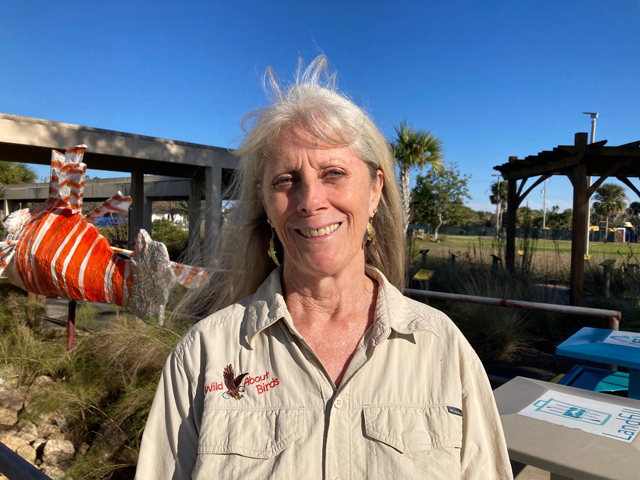
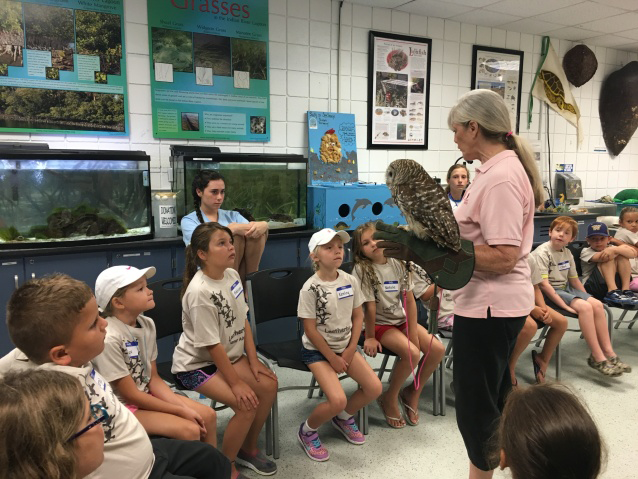
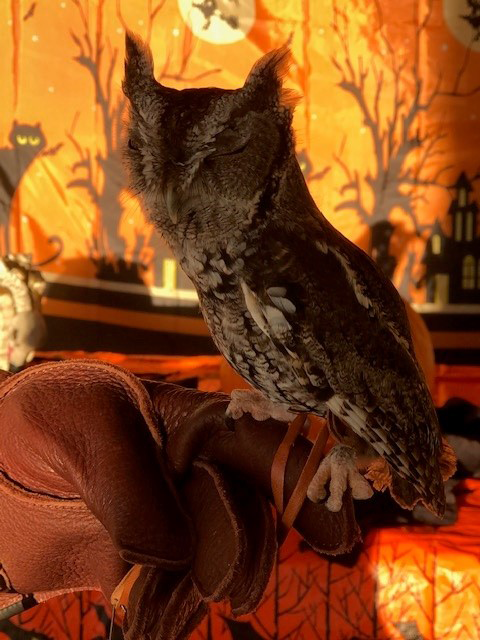
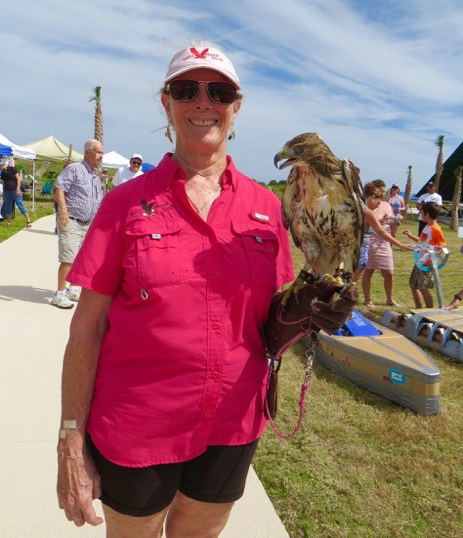
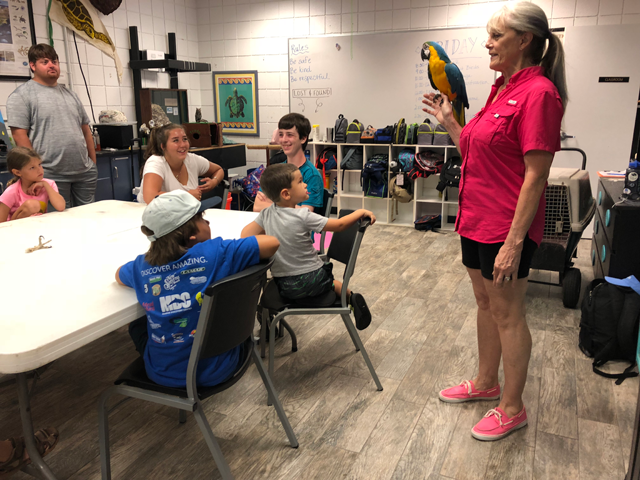

Follow Us!